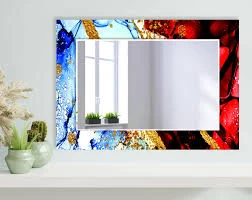

Understanding Solar Control Low-E Glass A Guide to Energy Efficiency
In today’s world, where energy efficiency is a growing concern, solar control low-emissivity (Low-E) glass has emerged as a popular choice for both residential and commercial buildings. This innovative glass technology not only enhances the aesthetic appeal of structures but also provides significant energy-saving benefits, playing a pivotal role in modern architecture and sustainable building practices.
What is Low-E Glass?
Low-E glass is a type of energy-efficient glass that features a thin metallic oxide coating. This coating is engineered to reflect specific wavelengths of light, particularly infrared and ultraviolet rays, while allowing visible light to pass through. The Low-E designation stands for low emissivity, referring to the glass's ability to reduce heat transfer between the indoor and outdoor environments. This characteristic makes it a crucial element in improving a building's thermal performance.
The Role of Solar Control
Solar control is an essential aspect of Low-E glass, particularly in regions that experience high solar gain. Solar control Low-E glass minimizes the amount of solar radiation that enters a building, which helps in regulating indoor temperatures and reducing reliance on air conditioning systems. By reflecting the sun's heat, this glass prevents overheating in summer while allowing warmth from the sun to enter during cooler months, achieving a balanced thermal environment.
Advantages of Solar Control Low-E Glass
1. Energy Efficiency The primary advantage of using solar control Low-E glass is its energy efficiency. By limiting solar heat gain, buildings can maintain a stable interior temperature. This results in lower energy consumption and reduced utility bills, significantly cutting operational costs over time.

2. Comfort Improved thermal comfort is another benefit. With reduced glare and balanced indoor temperatures, occupants can enjoy a more pleasant living or working environment. This is particularly important in areas with extreme temperatures or direct sunlight exposure.
3. UV Protection The UV-blocking properties of solar control Low-E glass help protect interior furnishings, artwork, and flooring from fading due to sun exposure. This prolongs the lifespan of valuable items and maintains the aesthetic integrity of indoor spaces.
4. Sustainability Using solar control Low-E glass contributes to sustainable building practices. By reducing energy consumption and minimizing the carbon footprint of buildings, it plays a significant role in combating climate change and promoting eco-friendly construction.
5. Aesthetic Appeal Modern advancements have allowed manufacturers to produce Low-E glass in various styles and finishes, ensuring that it meets architectural requirements without compromising on design. This versatility makes it suitable for various applications, from large storefronts to residential windows.
Installation Considerations
When considering the use of solar control Low-E glass, it’s essential to work with qualified professionals who understand the specific requirements of your project. Factors such as orientation, climate zone, and building design must be taken into account to ensure optimal performance. Additionally, proper installation is crucial to maximize the energy-saving benefits and maintain the integrity of the glass.
Conclusion
Solar control low-E glass is a valuable investment for anyone looking to enhance the energy efficiency of their building. With benefits ranging from reduced energy costs and increased comfort to enhanced UV protection and sustainability, it represents a smart choice in today’s environmentally-conscious society. As the demand for energy-efficient solutions grows, integrating solar control Low-E glass into building designs will undoubtedly become a standard practice, paving the way for a greener future. Whether you’re renovating an existing space or constructing a new building, consider the advantages of solar control Low-E glass to make a positive impact on both your environment and finances.